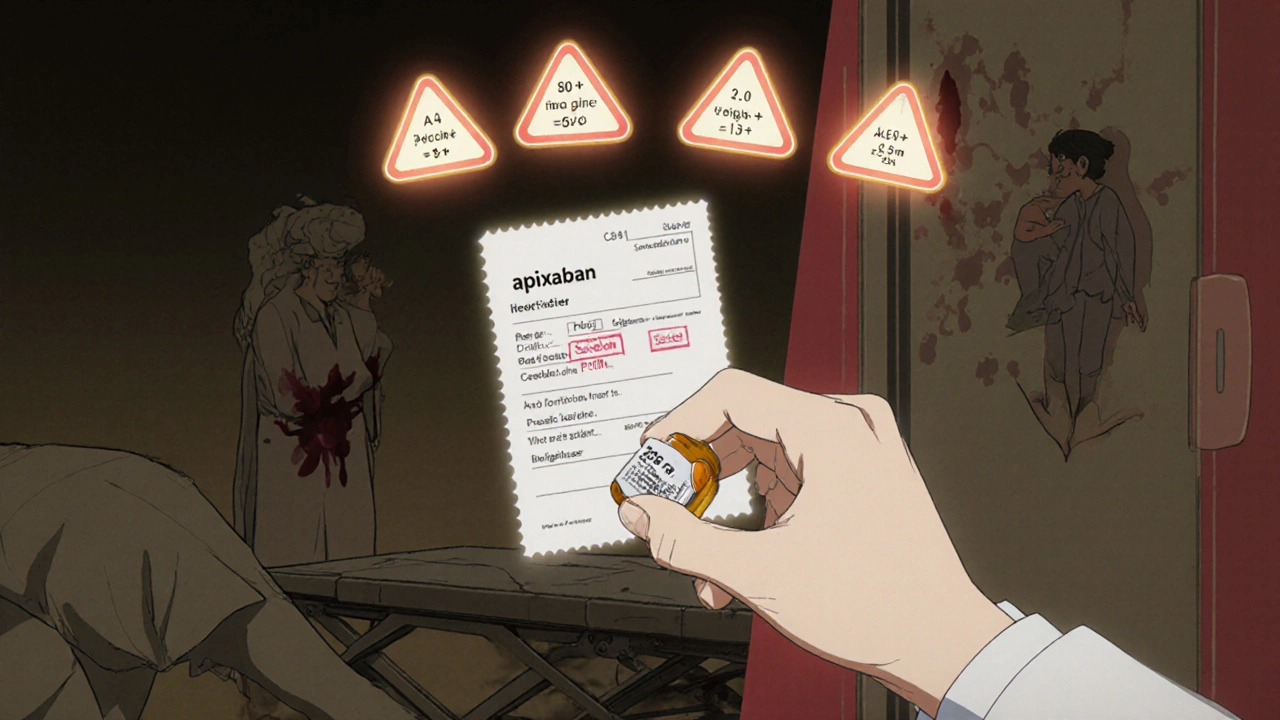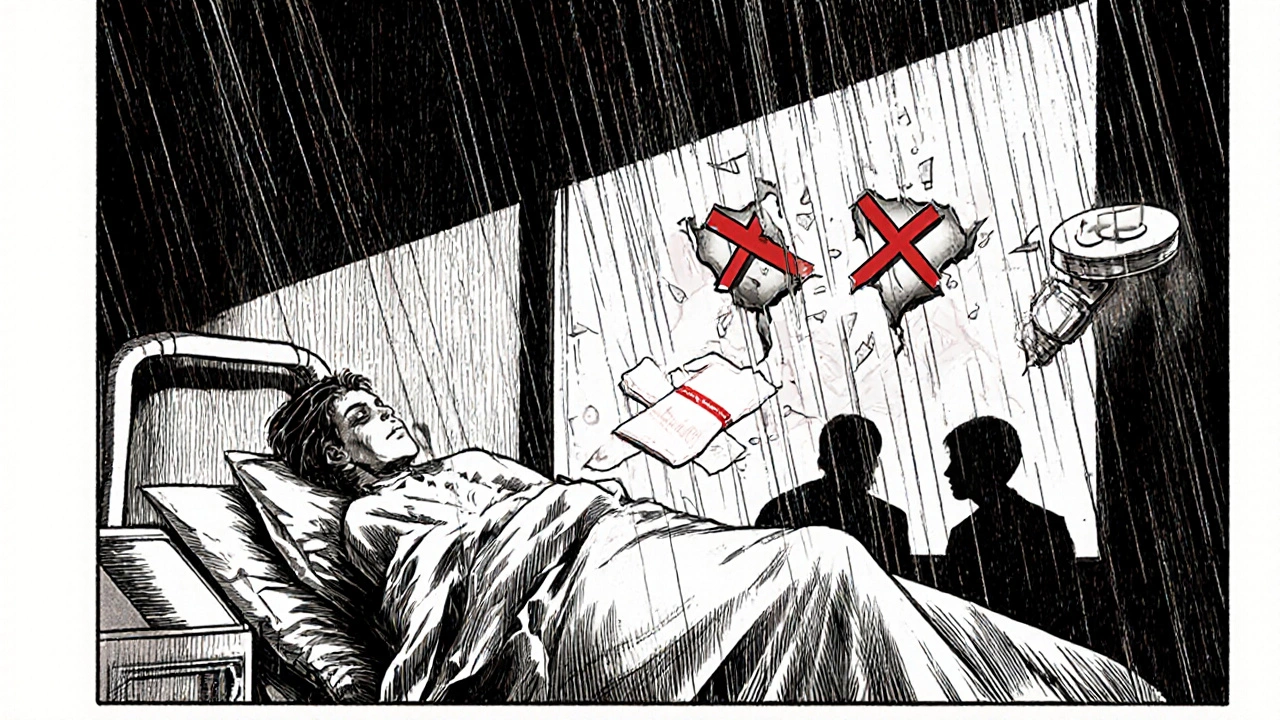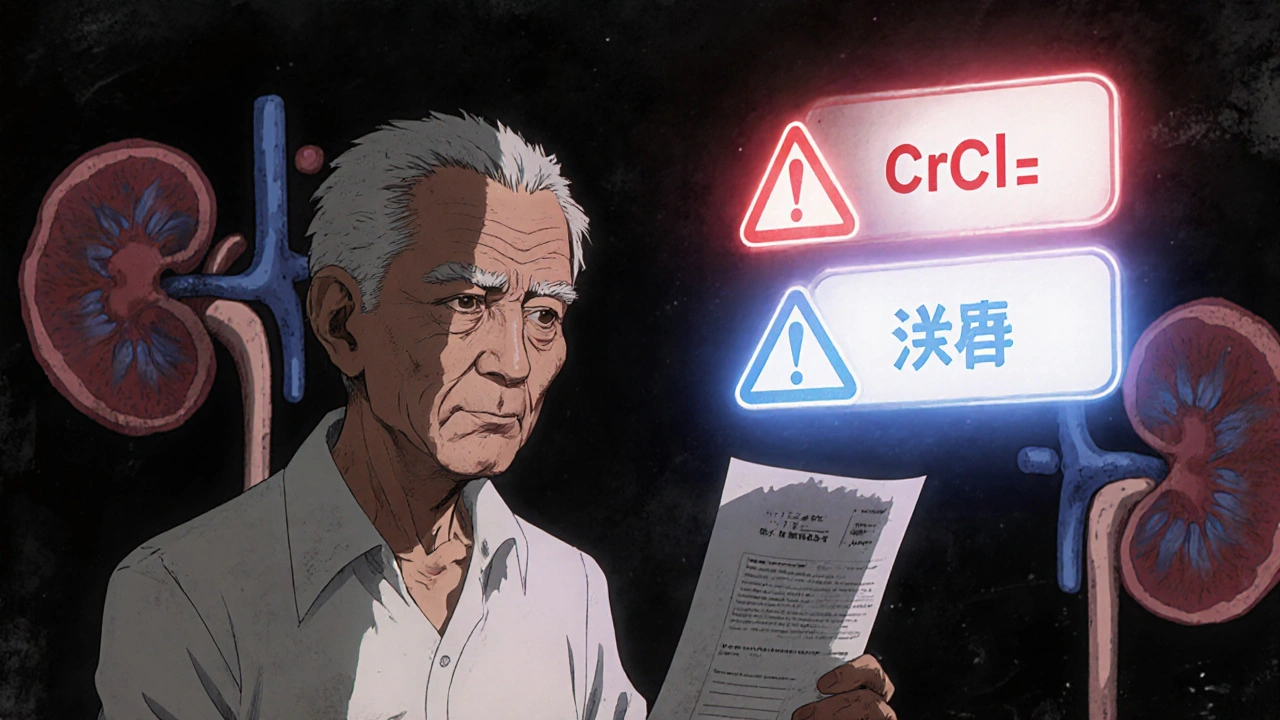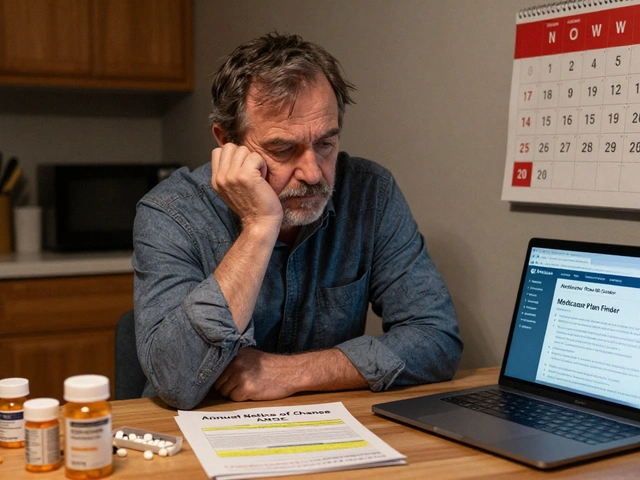DOAC Dosing Calculator for Renal Impairment
Calculated Results
Why DOACs in Kidney Disease Are a Tightrope Walk
When your kidneys aren’t working well, taking a blood thinner like apixaban or rivaroxaban can be dangerous-if you don’t adjust the dose. Direct Oral Anticoagulants (DOACs) were supposed to be simpler than warfarin. No weekly blood tests. Fewer food interactions. But here’s the catch: DOACs leave your body mostly through your kidneys. If your kidneys are weak, the drug builds up. Too much? Risk of serious bleeding. Too little? Risk of stroke or blood clots. It’s not guesswork. It’s math. And if you get the math wrong, the consequences can be life-threatening.
Which DOACs Are Used for Kidney Problems?
Four DOACs are approved for preventing stroke in people with atrial fibrillation: apixaban, rivaroxaban, dabigatran, and edoxaban. Each has different rules when kidney function drops. Apixaban is the most forgiving. Rivaroxaban is the most restricted. Dabigatran and edoxaban fall in between. All require dose changes as kidney function declines. But not all DOACs are created equal in advanced kidney disease.
How to Measure Kidney Function for DOAC Dosing
You can’t use your eGFR number from a routine blood test to decide your DOAC dose. That’s a common mistake. Doctors and pharmacists must use the Cockcroft-Gault formula to calculate creatinine clearance (CrCl). This formula uses your age, weight, sex, and serum creatinine. Why? Because the FDA and major guidelines like those from the American Heart Association and European Society of Cardiology require it. The formula was developed in 1976, but it’s still the gold standard for DOACs. Even if your eGFR says you’re in stage 3 kidney disease, your CrCl might tell a different story-especially if you’re elderly or underweight. That’s why manual calculation matters.
Apixaban: The Safest Choice for Poor Kidneys
Apixaban (Eliquis) is the only DOAC with solid data in end-stage kidney disease. It’s approved for use even in patients on dialysis. Standard dose is 5 mg twice daily. But if you’re 80 or older, weigh 60 kg or less, or have a serum creatinine of 133 μmol/L or higher, you drop to 2.5 mg twice daily. That’s the "ABC" rule: Age, Body weight, Creatinine. Meet two of those three? Reduce the dose. If your CrCl drops below 15 mL/min, apixaban is still an option-unlike the others. A 2020 study in the Journal of the American Heart Association found apixaban had lower bleeding rates than warfarin in dialysis patients. In real-world use, clinics report major bleeding rates of just 1.8% with apixaban 2.5 mg twice daily in ESRD patients, compared to 3.7% with warfarin.

Rivaroxaban: Avoid in Severe Kidney Disease
Rivaroxaban (Xarelto) is off-limits if your CrCl is below 15 mL/min. That’s not a suggestion-it’s a hard stop. Even in moderate kidney disease (CrCl 15-50 mL/min), the dose drops to 15 mg once daily. But studies show rivaroxaban doesn’t work well in advanced kidney disease. The drug stays in your system too long. The risk of bleeding rises sharply. Guidelines from the American College of Cardiology and KDIGO say not to use it in stage 5 CKD or on dialysis. Yet, some doctors still prescribe it off-label. That’s risky. A 2022 JAMA Internal Medicine study found that 37.2% of DOAC prescriptions in CKD patients had dosing errors-and rivaroxaban was the most commonly misused.
Dabigatran and Edoxaban: Use with Caution
Dabigatran (Pradaxa) can be used at a reduced dose of 75 mg twice daily if CrCl is between 15 and 30 mL/min. Below 15 mL/min? Don’t use it. Edoxaban (Savaysa) is dosed at 30 mg once daily if CrCl is between 15 and 50 mL/min. Below 15 mL/min? Contraindicated. Both drugs are cleared mostly by the kidneys, so their levels spike in poor kidney function. In the ENGAGE AF-TIMI 48 trial, edoxaban lost effectiveness in patients with CrCl under 50 mL/min. That’s why many nephrologists avoid them in advanced CKD. They’re fine for mild to moderate kidney disease-but not for the worst cases.
Why Warfarin Still Has a Role
Warfarin isn’t perfect. It needs blood tests. It interacts with food and other drugs. But in end-stage kidney disease, it’s still used-especially if DOACs aren’t an option. A 2020 review in the Journal of the American Heart Association found warfarin has "little proven benefit and a large risk of harm" in dialysis patients. But here’s the twist: DOACs aren’t proven to be better either. No large trial has definitively shown one DOAC beats warfarin in ESRD. The AXIOS trial, which tested apixaban versus warfarin in dialysis patients, was stopped early because not enough people signed up. Still, early data hinted apixaban might be safer. Until more data comes in, warfarin remains a fallback. For patients with CrCl above 30 mL/min, DOACs are clearly better. Below that? It’s a gray zone.

Real-World Mistakes and How to Avoid Them
Here’s what goes wrong in clinics: A 78-year-old woman with weight 55 kg and creatinine 140 μmol/L gets apixaban 5 mg twice daily. She’s on dialysis. She bleeds badly from her stomach. Why? She met two of the three criteria for dose reduction (age, weight, creatinine), so she should’ve been on 2.5 mg. But the prescription didn’t reflect that. A 2022 study in the American Journal of Health-System Pharmacy found that 28.4% of Cockcroft-Gault calculations in patients over 80 were wrong because they didn’t account for low muscle mass. Elderly people often have low weight and low creatinine-not because their kidneys are good, but because they’ve lost muscle. That makes CrCl look higher than it is. Always double-check weight and muscle status. Use the ABC rule. Don’t rely on eGFR. And if you’re unsure, consult a pharmacist or anticoagulation clinic.
What’s Coming Next?
Big studies are underway. The RENAL-AF trial, comparing apixaban to warfarin in patients with severe kidney disease, will release results in 2025. That could finally give us clear answers for CrCl 15-30 mL/min. The AXIOS trial’s pharmacodynamic data will also come out in late 2024. It’s not about which DOAC is "best"-it’s about matching the right drug to the right kidney function. By 2026, guidelines will likely be more specific. Until then, stick to the rules: calculate CrCl with Cockcroft-Gault, use apixaban when possible, reduce doses early, and avoid rivaroxaban in advanced disease.
Bottom Line: Three Rules to Remember
- Always calculate CrCl using Cockcroft-Gault-not eGFR.
- Apixaban is your safest bet in kidney disease. Reduce to 2.5 mg twice daily if you meet two of: age ≥80, weight ≤60 kg, creatinine ≥133 μmol/L.
- Never use rivaroxaban if CrCl is below 15 mL/min. Avoid dabigatran and edoxaban in severe kidney disease unless no other option exists.
If you’re on a DOAC and your kidney function changes-whether from illness, dehydration, or aging-get your CrCl rechecked. Don’t wait for your next routine visit. A simple blood test and a quick calculation can prevent a trip to the ER.
Can I use DOACs if I’m on dialysis?
Yes-but only apixaban. It’s the only DOAC approved for use in patients on hemodialysis. The standard dose is 5 mg twice daily, but if you’re 80 or older, weigh 60 kg or less, or have a creatinine level of 133 μmol/L or higher, reduce it to 2.5 mg twice daily. Other DOACs like rivaroxaban, dabigatran, and edoxaban are not recommended for dialysis patients due to high bleeding risk.
Why can’t I use eGFR to adjust my DOAC dose?
eGFR is a general estimate of kidney function, but it doesn’t account for muscle mass, age, or sex the same way the Cockcroft-Gault formula does. DOAC dosing guidelines are based on CrCl calculated using Cockcroft-Gault because that’s how the original trials were designed. Using eGFR can lead to over- or under-dosing, especially in elderly or frail patients. Always use Cockcroft-Gault for DOAC decisions.
What happens if I take too much DOAC with kidney disease?
Taking too much DOAC when your kidneys aren’t filtering well can lead to serious bleeding-like bleeding in the brain, stomach, or intestines. This can be life-threatening. Signs include unusual bruising, blood in urine or stool, vomiting blood, or severe headaches. If you suspect overdose, seek emergency care immediately. There are reversal agents for some DOACs, like andexanet alfa for apixaban and rivaroxaban, but prevention is better than treatment.
Is apixaban safe for elderly patients with low body weight?
Yes-but only if you reduce the dose. If you’re over 80, weigh 60 kg or less, or have high creatinine, you should take apixaban at 2.5 mg twice daily instead of 5 mg. Many elderly patients are underweight or have lost muscle, which lowers creatinine and can trick eGFR into showing better kidney function than reality. Always apply the ABC rule: Age, Body weight, Creatinine. Meeting two of these means reduce the dose.
Should I switch from warfarin to a DOAC if I have kidney disease?
If your CrCl is above 30 mL/min, switching to a DOAC like apixaban is usually better-it’s safer and easier to manage. If your CrCl is below 30 mL/min, especially below 15 mL/min, the choice gets complicated. Apixaban is still an option. Warfarin may be safer if DOACs are contraindicated. Talk to your doctor. Don’t switch without checking your CrCl and reviewing guidelines. In advanced kidney disease, there’s no perfect answer yet-only the best available option.
What to Do Next
If you’re on a DOAC and have kidney disease, here’s your action plan: First, ask your doctor to calculate your CrCl using Cockcroft-Gault. Second, confirm your current dose matches your CrCl and personal factors (age, weight, creatinine). Third, get your kidney function checked every 3-6 months-or sooner if you’re sick, dehydrated, or starting new meds. Fourth, keep a list of your DOAC and its dose in your wallet or phone. Fifth, never skip a dose or change it yourself. If you’re unsure, call your pharmacist. A small adjustment can make all the difference between safety and disaster.











John Rendek
2 Nov 2025 at 20:41This is one of the clearest summaries of DOAC dosing in renal impairment I've seen. The ABC rule for apixaban is gold. I've seen too many patients on 5 mg twice daily when they clearly meet two criteria. Always double-check weight and creatinine-especially in the elderly. A simple adjustment can prevent a bleed.